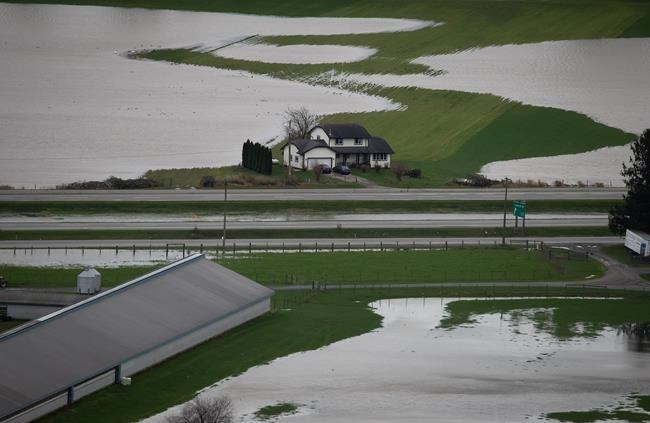OTTAWA — Canada's new national climate adaptation strategy will tie future federal infrastructure transfers to the provinces to projects that incorporate adaptation efforts starting next year.
By 2025, provinces and territories will also have to build climate resilience into recovery efforts to get federal help after a disaster.
The strategy was finalized Tuesday, at a time when most Canadians have already directly experienced the changing weather patterns of global warming.
"We all recognize Canada is not ready to face the impacts of climate change," Environment Minister Steven Guilbeault said as he presented the final strategy at a news conference in Vancouver.
He said while Canada must do more to slow climate change by cutting down on greenhouse gas emissions, it also must accept that we need to adapt our lives to the changes that have already happened.
The costs to people and the economy are already steep.
In 2021, severe weather caused $2.1 billion in insured damages, which does not include costs related to public infrastructure or uninsured private losses. In 2022 that rose to $3.1 billion.
Natural Resources Canada said the cost of fighting wildfires has exceeded $1 billion in six of the last 10 years. The cost of this year is not known, but a record area of land has burned already in the first six months.
The Canadian Climate Institute warned last year that the country's annual disaster recovery bills will be $5 billion a year by 2025, and by then the annual cost to Canada's economy will exceed $25 billion.
The national strategy identifies the biggest risks, including floods, wildfires and extreme heat, and sets targets to make Canada more resilient to them.
Blair Feltmate, head of the Intact Centre on Climate Adaptation at the University of Waterloo, said the strategy rightly lists fires, floods and heat as the biggest risks, noting the first two are the most costly and the third the most deadly.
He said there are fears the government won't follow through, and he pointed out adaptation plans and promises made in both 2016 and 2018 went nowhere.
Still, he said things are different now because the reality of climate change has hit home.
"Even between 2018 and now the game has changed," said Feltmate. "I'm hoping now we will have follow-through."
Guilbeault said he understands that trepidation but said with buy-in from every level of government and a promise for regular updates on the targets, he believes there will be action this time.
The plan separates action into several different categories including disaster resilience, health and well-being, nature and biodiversity, infrastructure and the economy. It includes specific targets and timelines, including the new requirements coming for federal infrastructure and disaster aid.
Feltmate said the fact that more than a third of the targets have end dates over the next three years means the government can be held accountable soon if they're not met.
The targets include having plans to prevent heat-related deaths in 80 per cent of health regions by 2026 and eliminating such deaths entirely by 2040. Officials said this could include making sure there are adequate cooling centres available during heat waves or programs to help people install cooling systems.
Also in 2026, climate change resiliency will be factored into the three national codes for buildings, electricity and highway and bridge design.
By 2028 the government wants a plan in place to help communities recover more quickly following an extreme weather event, including rebuilding homes that were lost or allowing evacuees to return home faster.
That same year provinces and territories are to identify areas at highest risk for wildfires and have prevention and mitigation plans in place for 15 per cent of them. Two years later, those plans must cover all the highest-risk areas.
By 2030 the federal government also intends to establish 15 new national urban parks. Urban green space helps keep cities naturally cooler, the report said.
Ottawa has spent or set aside $6.5 billion for adaptation since 2015, including the $1.6 billion announced last fall when the adaptation strategy was published in draft form.
Guilbeault said he knows even more money will be necessary.
There are still bilateral agreements in the works between Ottawa and each province and territory that will be more specific about their individual risks and plans. But British Columbia Environment Minister George Heyman said the national strategy is a good start with "goals, objectives and targets."
B.C. has been hit repeatedly with major events, from the heat dome in 2021 that killed more than 600 people and led to wildfires that destroyed the town of Lytton, to the atmospheric river that caused catastrophic flooding in the southern parts of the province just a few months later.
"The impacts are escalating and unfortunately we can expect them to continue to escalate," he said.
This report by The Canadian Press was first published June 27, 2023.
Mia Rabson, The Canadian Press



